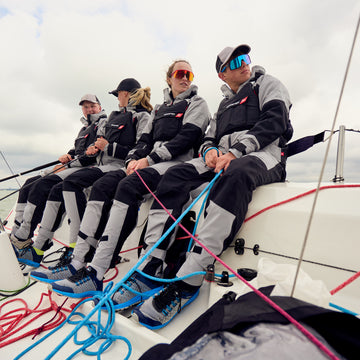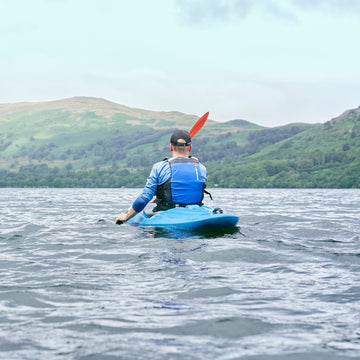Product Development
At Rooster, we have a passionate team focused on getting people on and in the water; enjoying all that the elements can deliver, we want to ensure that our kit is versatile through comfort, durability, adaptivity and performance, whilst retailing at a fair price.

In general, our product development comprises of the below stages:
1. Analysis/review of collection and market demand
Analysis of our current collection is done at several stages in the year with the core team at Rooster HQ. This is to assess sales and market demand, any gaps in product collection, improvements needed and any new ideas we have. This sets us up for the development planning – our planning can be forecasting several years ahead of when we would like to launch a product for.2. Research and initial concept generation
Reducing negative environmental impact is one of the key design considerations that is at the forefront of every development. We have a team who are passionate about sustainability at every level of the product development, amongst which lead product designer, Kate Morrison, has a degree in Sustainable Product Design, that is translated throughout.Alongside considering environmental factors, we also look ahead at material/technology trends and developments as well as safety regulations to ensure that when the release date comes around, we are up to date or even ahead of the curve.
3. Prototyping and testing
We often make the first prototype in house to quickly translate our ideas, establish a working panel layout, locate stress points, select appropriate materials and see how the features will work in practise. Usually the testing/fitting for an initial prototype will be done solely in our office, but we have been known to take to the water to double check how the unusual movements performed on the water affect the product– these can be hard to mimic on land.4. Technical Spec generation and first ‘proper’ sample
The spec pack has to be technically accurate and is the platform we use to communicate all parts of the design including a technical drawing, colour visualisation, panel layout, features/trims, logos/labels and fabrics. The more accurate and detailed the spec pack, the better the sample will be, so we try to make it as thorough as possible. It also means that sample rounds can be minimised, which saves time, money and environmental impact.5. Analysis and feedback
At each stage, we are always checking for quality and that our design has been translated between our tech pack and the sample. We also work with a variety of ‘super-users’ to gather the broadest feedback that we can, these range from top level athletes, shop owners and sales agents, to mums, sailing schools and recreational hobbyists.6. Revised sample and fitting sample production
This is an inhouse stage where we check the sizing is correct for our market and in line with our size chart. We use fit models, with a range of body shapes and sizes to ensure the fitting will suit the broadest market – this is something that we have been particularly focused on over the past few years to create uniformity across the range.7. Testing and feedback – launch to international Rooster ‘dealers’
Once we and most importantly, chief tester Steve Cockerill, are happy with all features, construction and fit, we then put out a couple of the samples to Rooster ambassadors and dealers for further testing/feedback. This is an important stage, as when working so close to the product, it can be easy to miss something.
8. Final Pre-Production sample generation
Our strict QC policy, which we have worked hard on with our factories, is followed through at every stage in the production to ensure the top quality and standards. We don’t release a product to market unless the Rooster HQ team fully believes in it and its position within the Rooster product collection.
9. Product launch
The eager waiting game for the product to arrive into stock begins, and information is passed over to marketing to create a launch campaign!




















 Select Store
Select Store
 US
US
 UK
UK